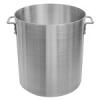Hello everyone! Here's a scenario: 1mL sample transferred to Petri dish in duplicates. Agar were poured, upon solidified were incubated. After incubation period, one agar plate got count, the other agar plate had no count. 1)How does the colony counting rule works when one agar plate has count but the other agar plate has NO count? 2)Does this result consider valid in the first place? I couldn't find any standard/reference that could explain on this. Appreciate your input on this. Do share if there's any standard/official method reference. Thank you. Have a great day! Kumar
Hi Charles,
Thank you for your input.
The samples being tested here are dairy products (UHT & pasteurized milk, condensed milk).
Our count limit is <1 CFU/mL (for UHT), <10 000 CFU/mL (for pasteurized & condensed milk).
Method is pour plate using Plate Count Agar (added with skimmed milk).
One of the result obtained was ~ 30 CFU/mL in 1st plate, <1 CFU/mL in 2nd plate. No dilution involved.
Kumar
Hi Kumar,
Re ^^(red) - I assume this was sterilized milk.
This pour plate method is presumably a "rapid" test to (hopefully) result in no colonies on the plates.
IMEX 0/30 would be typically, politely, interpreted as a "Laboratory Accident" (ie somewhere a gross error). > Need to repeat.
ISO 7218, 2001 is afaik unique in proposing that in case of 2 plates (test sample or first dilution) containing less than 15 colonies, calculate the estimated number Ne of microorganisms present in test sample as arithmetic mean of colonies on 2 plates via -
Ne = S/(V x n x d)
S=sum of colonies on 2 plates, V= volume of inoculum applied to each plate in mls, n=number of plates, d= dilution factor of initial suspension [=1 when undiluted liquid is used]
eg at a first dilution (10-2), 12 and 13 colonies counted so -
Ne = (12+13)/(1 x 2 x 10-2) = 25/0.02 = 1250 > 1300 cfu/ml
In almost all cases, this calculation would obviously fail your limit.
Most (other) APC Standards afaik would consider the result of 0/30 colonies unacceptably divergent and recommend to repeat.
MPN methodology using 3 x 5 tubes can also achieve < 1 cfu/ml in a more precise way than Pour Plate if so desired.
Milk not my area of expertise but I noticed that yr APC limit for "condensed milk" is 10x that in US-58.938 (sweetened condensed milk).


















